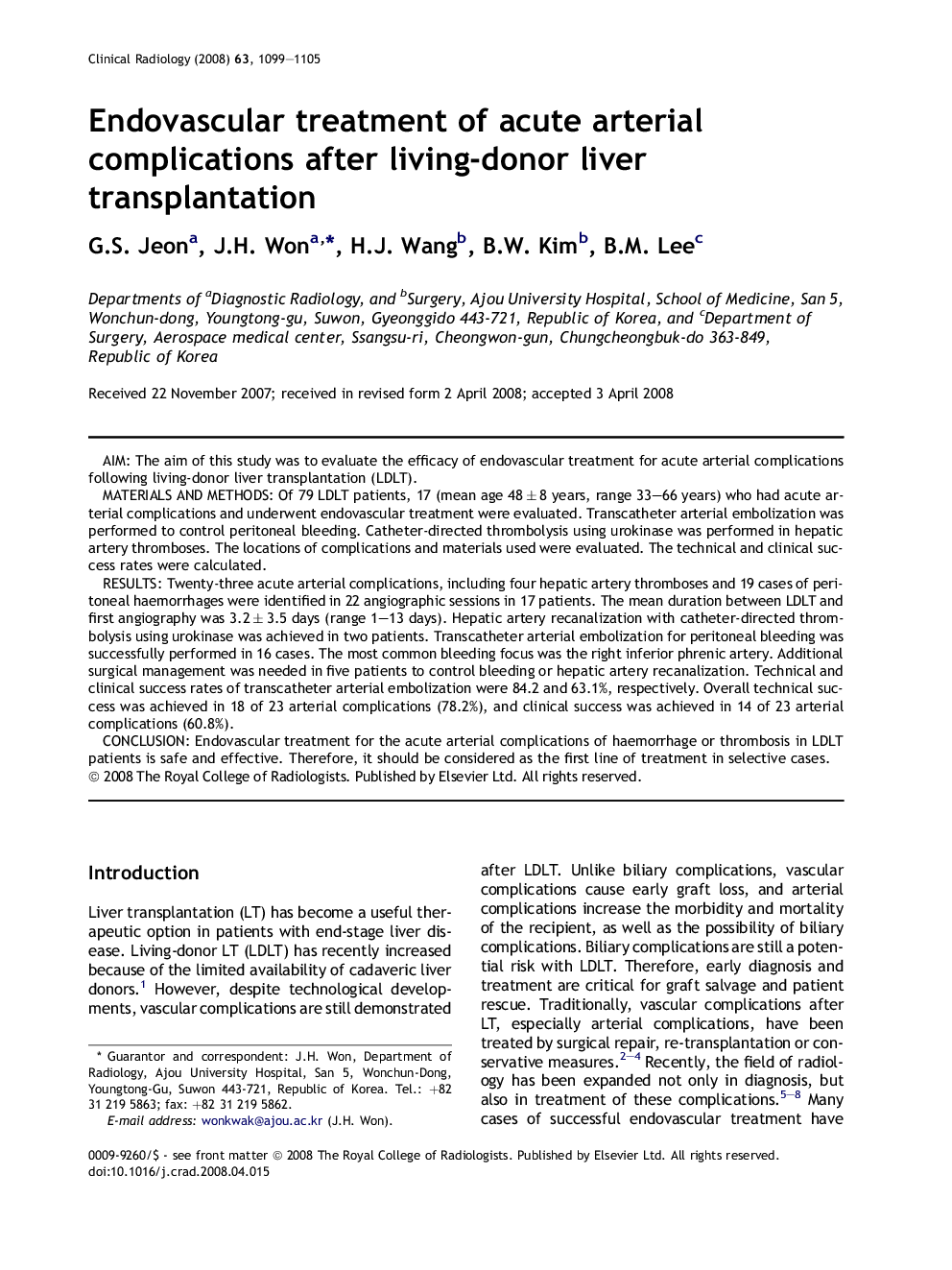| Article ID | Journal | Published Year | Pages | File Type |
|---|---|---|---|---|
| 3984267 | Clinical Radiology | 2008 | 7 Pages |
AimThe aim of this study was to evaluate the efficacy of endovascular treatment for acute arterial complications following living-donor liver transplantation (LDLT).Materials and methodsOf 79 LDLT patients, 17 (mean age 48 ± 8 years, range 33–66 years) who had acute arterial complications and underwent endovascular treatment were evaluated. Transcatheter arterial embolization was performed to control peritoneal bleeding. Catheter-directed thrombolysis using urokinase was performed in hepatic artery thromboses. The locations of complications and materials used were evaluated. The technical and clinical success rates were calculated.ResultsTwenty-three acute arterial complications, including four hepatic artery thromboses and 19 cases of peritoneal haemorrhages were identified in 22 angiographic sessions in 17 patients. The mean duration between LDLT and first angiography was 3.2 ± 3.5 days (range 1–13 days). Hepatic artery recanalization with catheter-directed thrombolysis using urokinase was achieved in two patients. Transcatheter arterial embolization for peritoneal bleeding was successfully performed in 16 cases. The most common bleeding focus was the right inferior phrenic artery. Additional surgical management was needed in five patients to control bleeding or hepatic artery recanalization. Technical and clinical success rates of transcatheter arterial embolization were 84.2 and 63.1%, respectively. Overall technical success was achieved in 18 of 23 arterial complications (78.2%), and clinical success was achieved in 14 of 23 arterial complications (60.8%).ConclusionEndovascular treatment for the acute arterial complications of haemorrhage or thrombosis in LDLT patients is safe and effective. Therefore, it should be considered as the first line of treatment in selective cases.
